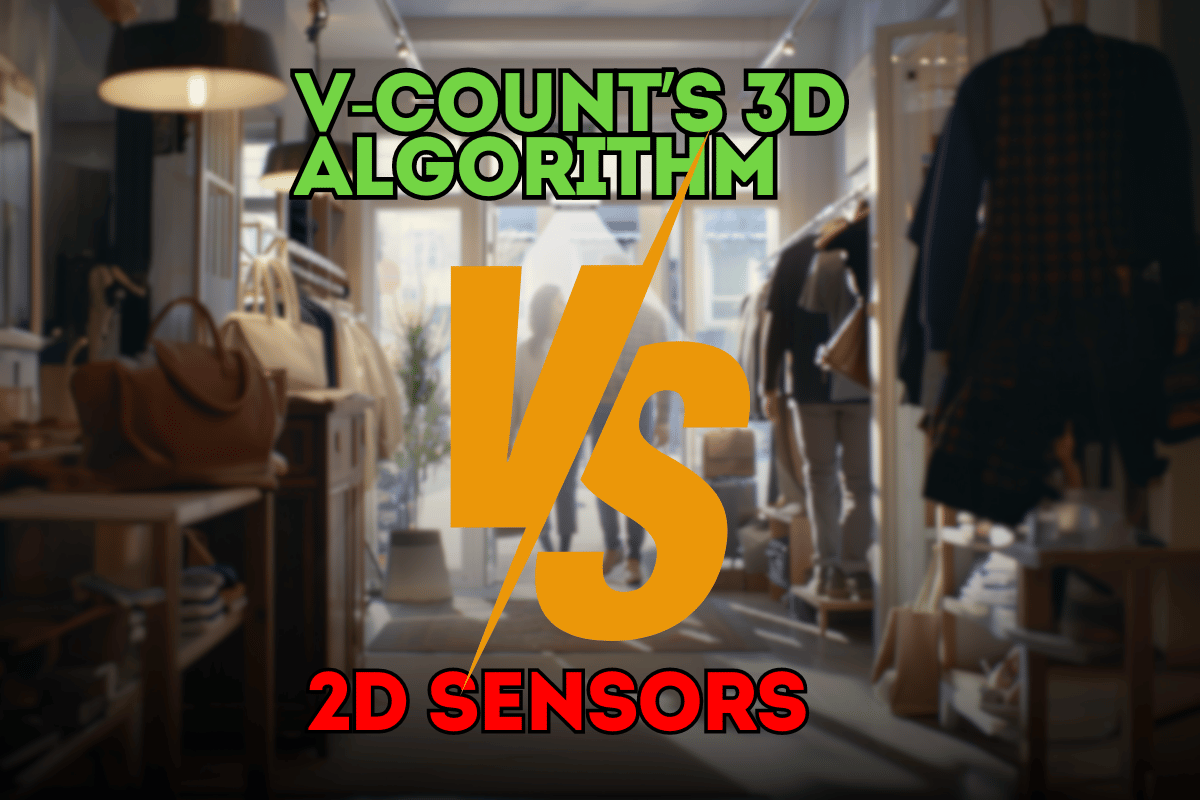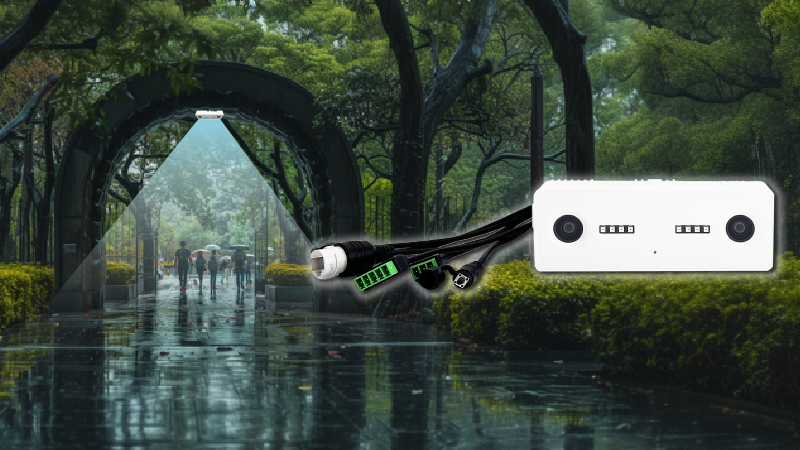In the modern world, where data is king, having accurate people counting methods is very important across a wide spectrum of industries, from the retail sector to the public transportation. In a world that’s becoming increasingly quantified, the ability to accurately count and analyze foot traffic is no longer a luxury but a necessity. A standout company in this regard is V-Count, a global frontrunner in the realm of people counting and analytics solutions. With transformative and innovative 3D algorithm, V-Count has significantly revolutionized the field, pushing the boundaries of what’s possible in people counting.
In this blog post, we will dive deep into exploring the considerable advantages that V-Count’s pioneering 3D algorithm holds over the more traditional 2D sensors. We will discuss at length how this groundbreaking technology takes accuracy and efficiency to unprecedented levels in a variety of scenarios. The aim of this exploration is to provide a comprehensive understanding of the transformative potential of V-Count’s 3D algorithm and how it’s redefining the standards for people counting and analytics solutions.
Sun-Shadow Differentiation
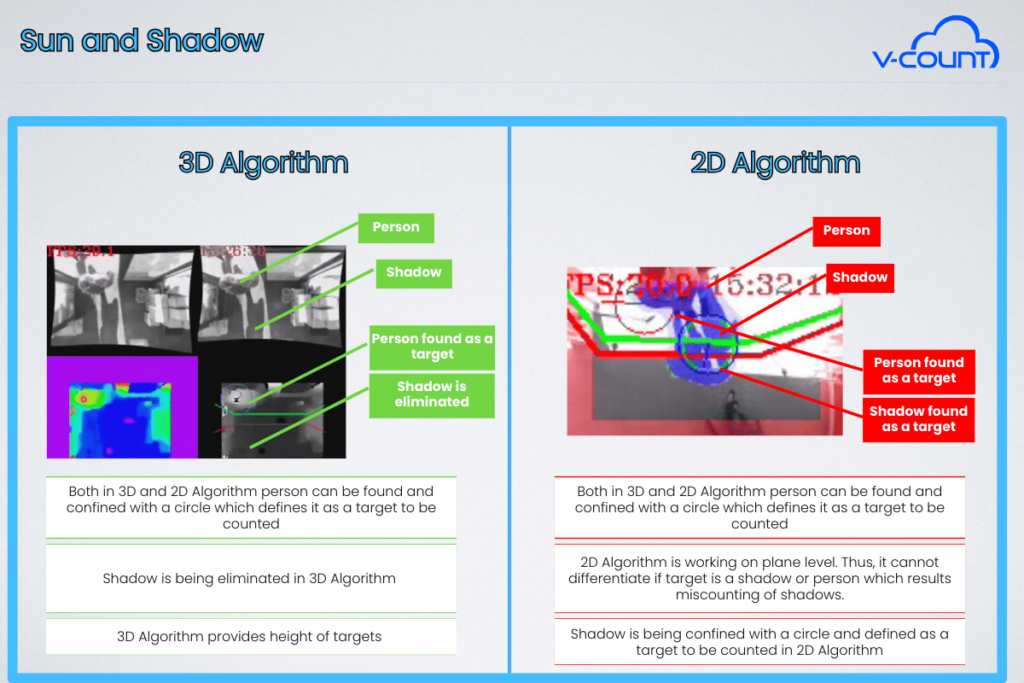
One of the most prevalent challenges that frequently arises is the difficulty in distinguishing between actual individuals and their shadows. This is a problem that often hampers the efforts of those needing to maintain accurate counts. Traditional 2D sensors algorithms, which have been the go-to solution for some time, unfortunately, often fall prey to this challenge. They frequently misinterpret shadows as people, which leads to an overestimation in the count, thus resulting in data that is not entirely accurate.
This is where the innovative 3D algorithm from V-Count comes into play. It has been designed specifically to address this very issue and does so with remarkable effectiveness. It works by eliminating shadows from the count, thereby focusing solely on the actual individuals present. The 3D algorithm hinges on the principle of analyzing the height of the targets. By doing so, it is able to discern between real people and mere shadows, ensuring that only actual people are included in the final count. This results in data that is far more reliable, accurate, and useful for those relying on it for various purposes.
Crowd Density Accuracy
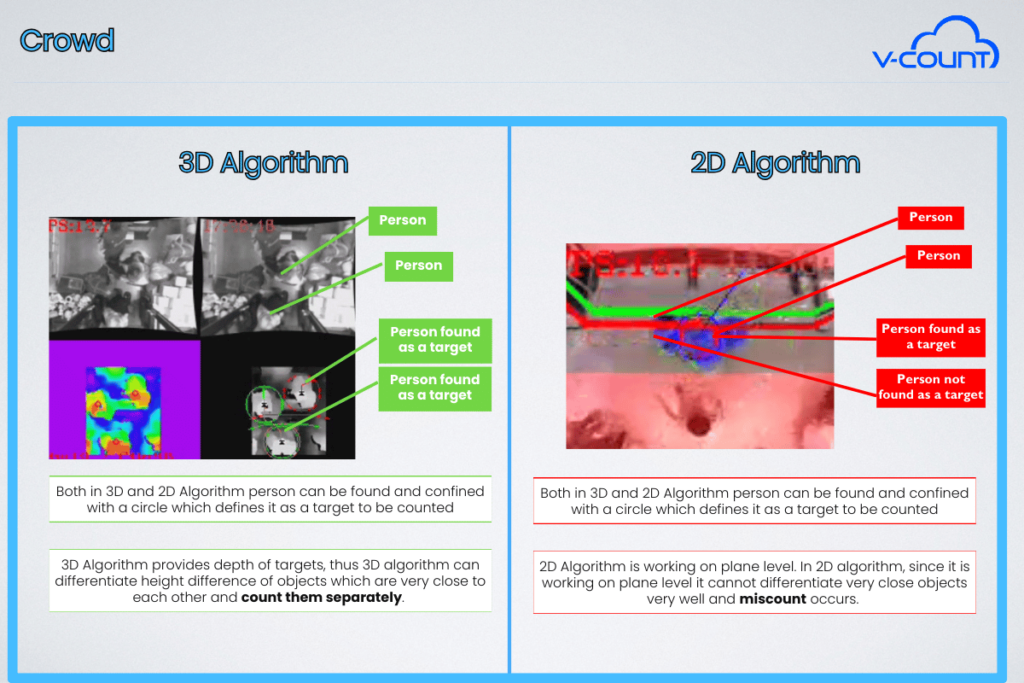
In environments where there is a high concentration of people, the ability to count individuals accurately becomes of paramount importance. Traditional 2D sensors, which operate on a two-dimensional plane, often face difficulties when trying to differentiate between individuals who are in close proximity to one another. This leads to a common issue of undercounting, where the actual number of people present is higher than the number recorded by the system. This discrepancy can result in inaccurate data, which can then impact the quality of decision-making based on this data.
V-Count, however, has developed a solution to this problem in the form of a 3D algorithm. Unlike its 2D sensors counterparts, V-Count’s 3D algorithm has the ability to assess the depth of targets, not just their length and width. This additional dimension allows it to accurately distinguish between individuals, even when they are part of a dense crowd. This capability ensures that the count of people is precise, regardless of the crowd density.
In turn, this high level of accuracy leads to better quality data being available for decision-making. Whether it’s to inform crowd management strategies, or to provide insights for retail analytics, having a precise count of individuals can significantly enhance the effectiveness of these decisions.
Shopping Cart and Baby Carriage Differentiation
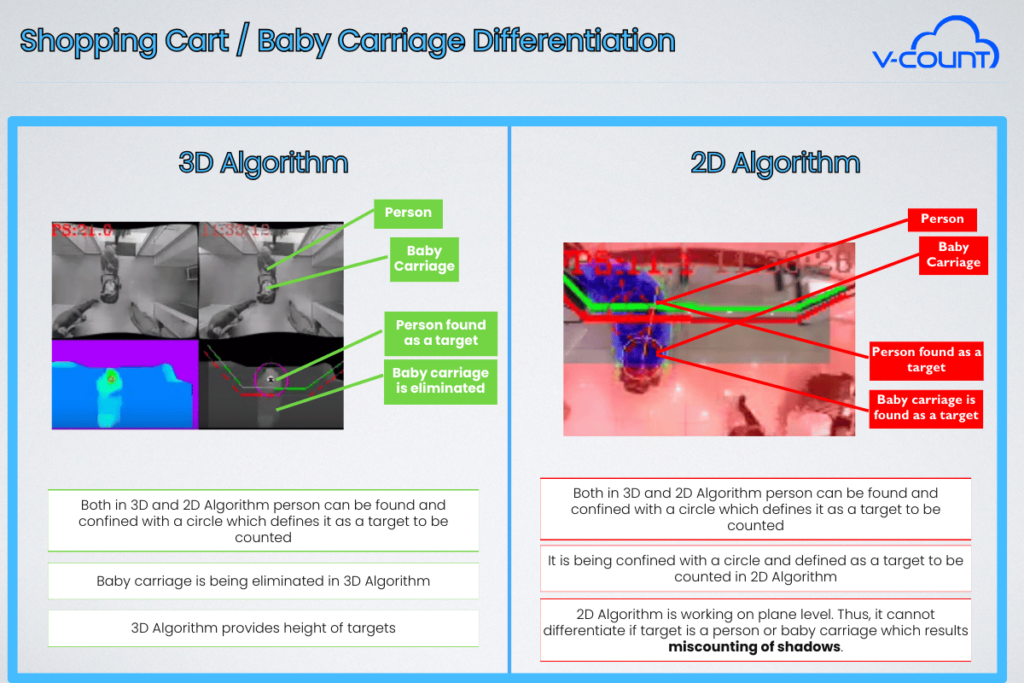
Retail environments often face the challenge of distinguishing between people and objects such as shopping carts or baby carriages. The 2D sensor typically counts these objects as people, skewing the data. V-Count’s 3D algorithm eliminates this issue by evaluating the height of targets. It accurately identifies and excludes objects like baby carriages from the count, providing a true representation of customer footfall.
Children-Adult Differentiation
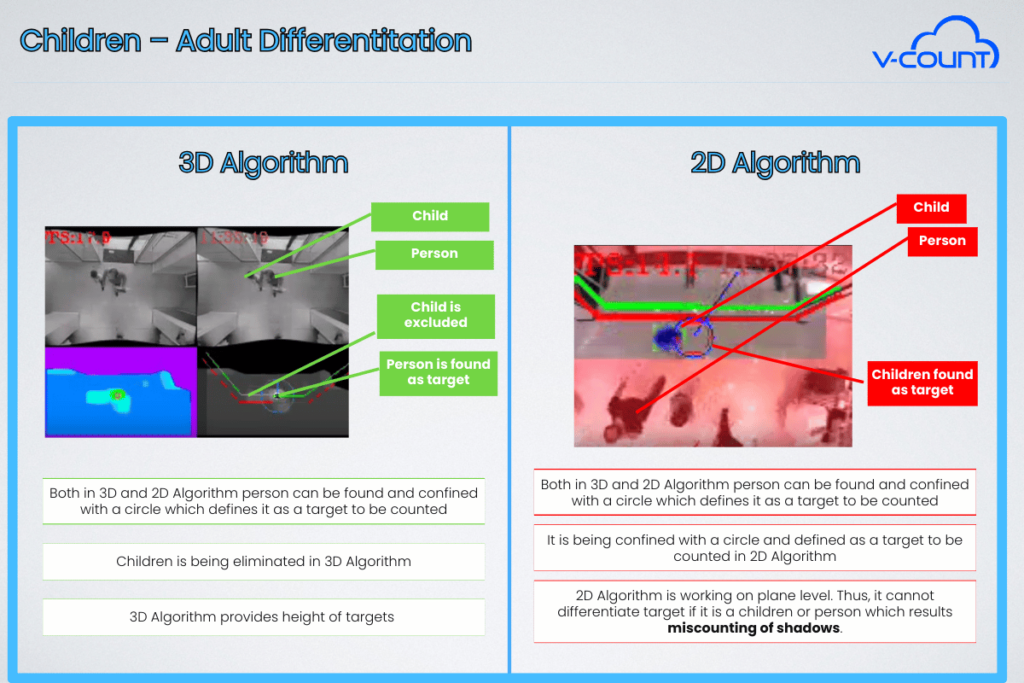
Another crucial aspect is the ability to differentiate between children and adults. The 2D sensors algorithms fails to make this distinction, counting children as adults. V-Count’s 3D algorithm, however, uses height data to differentiate between the two, allowing for more nuanced and useful data collection. This feature is particularly beneficial in environments like amusement parks, museums, and retail stores where understanding the demographic composition of visitors can inform strategic decisions.
Conclusion
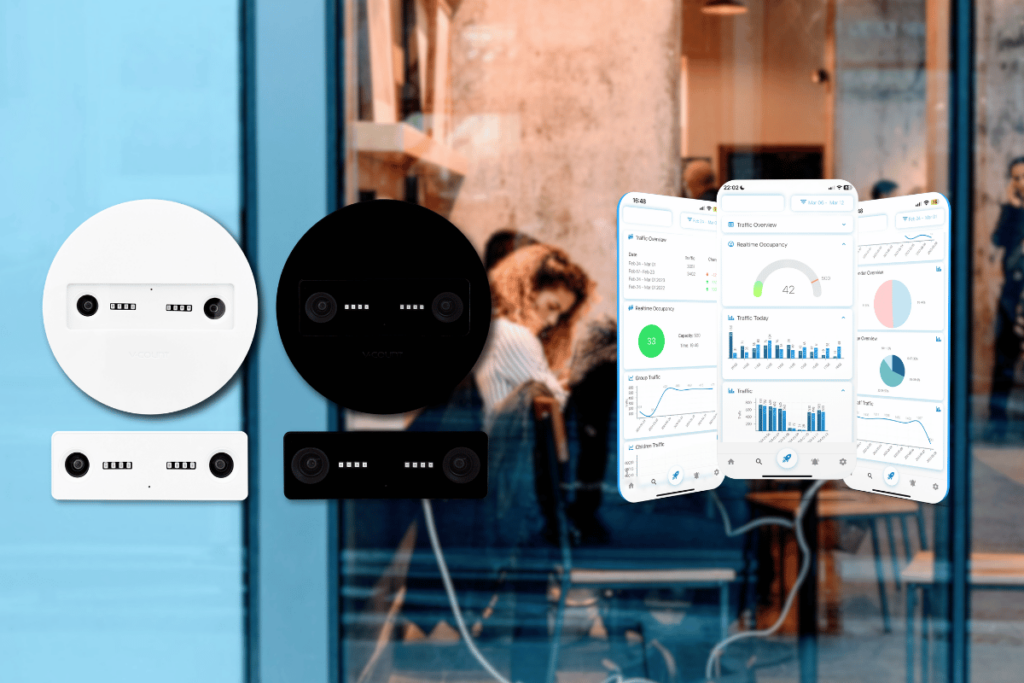
V-Count’s 3D algorithm stands out as a superior solution in the realm of people counting. By addressing the limitations of 2D sensors algorithms, it provides more accurate and reliable data. Whether it’s eliminating shadows, accurately counting in crowded spaces, distinguishing between people and objects, or differentiating between children and adults, the 3D algorithm enhances the precision of people counting systems. For businesses and organizations seeking to leverage advanced analytics for better decision-making, V-Count’s 3D people counting solution offers a robust and reliable tool.


